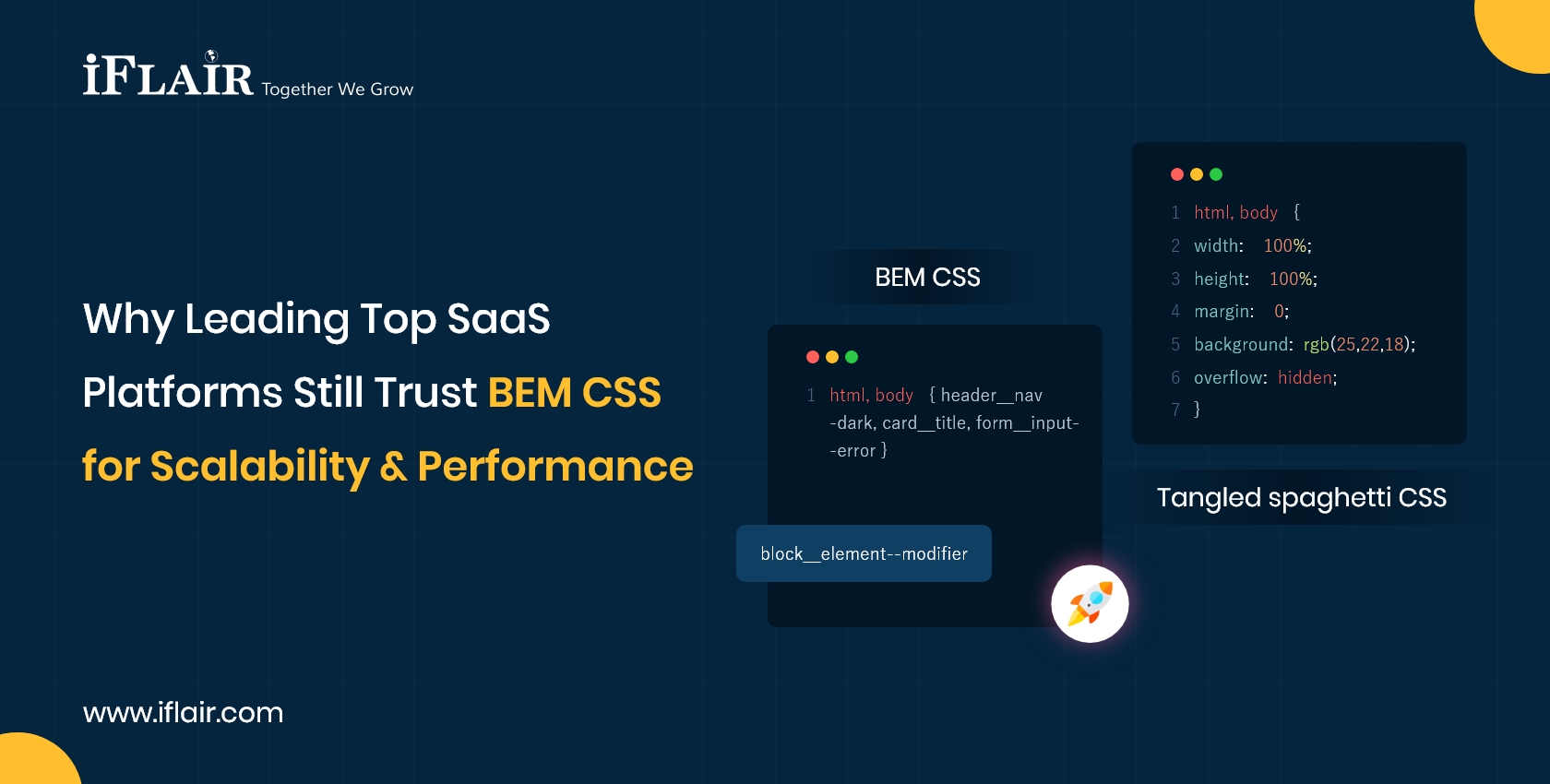
Why Leading Top SaaS Platforms Still Trust BEM CSS for Scalability and Performance
Apr 07, 2025 |
7 minutes read

Why SaaS Leaders Still Choose BEM in 2025
In 2025, SaaS development will dominate the digital world, offering cloud-based solutions for businesses worldwide. However, as these platforms scale, managing CSS efficiently becomes a major challenge, especially in SaaS Consulting Services. To solve this, major SaaS companies like Shopify, Slack, Salesforce, and Trello rely on the BEM (Block Element Modifier) methodology to keep their CSS clean, scalable, and maintainable. In areas like Shopify development and other SaaS-based applications, BEM ensures consistency and efficiency across rapidly growing codebases. But why do the biggest SaaS brands still use BEM in 2025 when newer technologies like CSS-in-JS and utility-first frameworks exist? Let’s explore.
What Makes BEM CSS Perfect for SaaS Platforms?
1. Scalability for Large-Scale SaaS Applications
SaaS products handle millions of users and need a scalable design system. BEM ensures:
- Reusable components across different sections of the platform.
- Consistent styling across teams working on various SaaS features.
- Better organization for long-term maintainability.
2. Improved Performance & Faster Page Loads
Modern SaaS applications prioritize performance optimization. BEM helps by:
- Reducing unnecessary CSS with structured class names.
- Minimizing CSS file size, ensuring faster page loads.
- Improving caching efficiency since styles are modular and predictable.
3. BEM Works with Modern SaaS Tech Stacks
Many SaaS companies use React, Vue.js, and Angular for front-end development.
- BEM integrates seamlessly with these frameworks.
- Works well with SCSS, Tailwind CSS, and Bootstrap.
- Supports CSS-in-JS solutions like Styled Components while maintaining consistency.
Big SaaS Companies That Use BEM CSS
1. Shopify – Scalable E-commerce for Millions of Businesses
Why Shopify Uses BEM?
- Handles thousands of e-commerce templates with reusable styles.
- Maintains consistent UI across stores with modular components.
- Improves performance for mobile-first web experiences.
Example: Shopify BEM CSS Structure
.product-card {
border: 1px solid #ddd;
}
.product-card__title {
font-size: 18px;
}
.product-card–featured {
background-color: yellow;
}
2. Slack – The Leading Business Communication Tool
Why Slack Uses BEM?
- Modular CSS makes it easier to manage real-time chat UI.
- BEM ensures better performance for web and desktop apps.
- Improves accessibility by keeping CSS well-structured.
Example: Slack BEM CSS Structure
.chat-message {
padding: 10px;
border-bottom: 1px solid #eee;
}
.chat-message__author {
font-weight: bold;
}
.chat-message–unread {
background-color: #f0f0f0;
}
3. Trello – Project Management for Teams
Why Trello Uses BEM?
- Trello’s drag-and-drop UI requires a structured CSS approach.
- BEM keeps styling modular, making it easy to update UI elements.
- Prevents conflicts in a component-based architecture.
4. Salesforce – The #1 CRM Software
Why Salesforce Uses BEM?
- Ensures scalability for enterprise-level UI.
- Helps maintain UI consistency across different dashboards.
- Reducing CSS complexity in large applications.
Scale Your SaaS UI with Clean, Fast CSS Today
The Way Forward
Even in 2025, leading SaaS companies like Shopify, Slack, Trello, and Salesforce still rely on BEM because of its scalability, performance, and maintainability.
- If you’re building an SaaS platform, using BEM ensures that your CSS stays modular and conflict-free.
- BEM integrates well with modern tech stacks like React, Vue, and Angular.
- It remains one of the best CSS methodologies for large-scale applications.
Want to build a scalable SaaS product? Start using BEM today!


